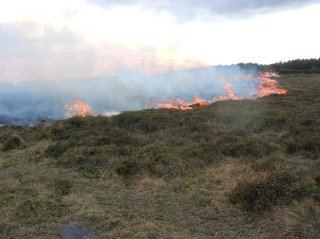Although much of the unique natural history value of The Lizard was not recognized until relatively recently, its wildlife resources are now very well protected. There are a host of designations, dedicated organisations and individuals which combine to ensure that this priceless area is best conserved.
|
|
The heathlands and the coastline stand out as the most remarkable habitats on The Lizard. Fortunately, the coastal habitats, with the exception of the coastal valley marshes and the sand beaches, have by their very nature avoided the worst ravages of mans activities. The heathlands conversely have suffered from gross reclamation, as have heathlands throughout Britain. Hopkins (1983) calculated that at the time of their greatest extent, the Lizard heathlands covered 3660ha. In 1980 this area had been reduced to 2520ha, a loss of 31%. Those areas lost fell victim to agricultural reclamation and military and radiocommunication developments. However, this loss is considerably less than that of many other heathland districts, such as Dorset, the Thames Basin and Breckland, and is well below the national average of 75% lost since 1800: this is presumably a reflection of the inherent infertility of these heaths. Also, these `rock heaths` are simply less easy to plough than their eastern sand counterparts.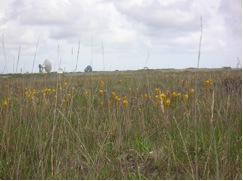
Fortunately, much of both the coastal and the heathland habitats are now fully protected from destruction of this type. See below for the variety of land designations that apply on The Lizard.
Natural England, the National Trust, Cornwall Wildlife Trust, and Cornwall Bird Watching and Preservation Society all own and manage land on the peninsula. Natural England also works with private landowners to ensure land of high nature conservation value is managed sympathetically through mechanisms such as agricultural stewardship schemes. The RSPB also has a presence in the area, principally through its chough protection project. And Plantlife have taken a keen interest in habitat restoration and protection projects.
Land acquisition and notification is only half the conservation story though. Correct management of both habitats, together with their microhabitats, is paramount if they are to maintain their vegetational identity and full floristic diversity. Historical research has indicated that the heaths and coastal habitats were extensively managed in the past. Literature and field evidence tells us that the cliff slopes were extensively grazed, and the heaths were grazed, turf pared, cut for furze and quarried for serpentine. Today these activities are much rarer than formerly or indeed non-existent. The conservation organisations have sought to re-establish appropriate levels and quality of grazing, either through their own livestock or in partnership with tenants. It is an ongoing juggling act for the conservation bodies to ensure that sites have the right intensity and type of grazing to ensure favourable conditions for plants, invertebrates and animals.
|
|
|
|
|
|
|
|
Winter scrub control and controlled heath burning are other tools that can be brought to bear as the conservation land managers seek to achieve the right mosaic of micro-environments. Generally the rarer species and their habitats are well protected on the Lizard. Indeed, the fact that the vast majority of the rarities survive on their original sites of discovery is testimony to the success of conservation to date.
Nature Conservation Land Designations on The Lizard
Area of Outstanding Natural Beauty (AoNB)
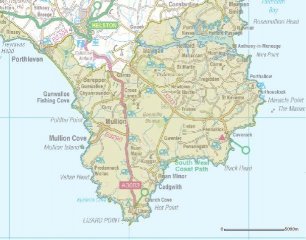
The whole of The Lizard peninsula is included in Cornwall AoNB, which is primarily a designation to protect landscape value.
For more details see https://cornwall-landscape.org/
Special Area of Conservation (SAC)
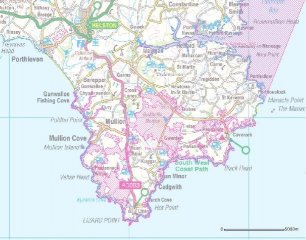
This is an international designation, and so ensures the UK has an obligation to ensure that the areas identified are maintained in favourable condition.
For further info see https://jncc.gov.uk/our-work/special-areas-of-conservation/
The conservation objective for the SAC features of interest are to maintain in favourable condition the following habitats (where maintenance implies restoration if the feature is not currently in favourable condition) (text taken from SAC designation)
Mediterranean temporary ponds

There are widespread examples of the serpentine variant of Mediterranean temporary ponds on the Lizard heaths. A number of rare species, including chives Allium schoenoprasum, dwarf rush Juncus capitatus and land quillwort Isoetes histrix, occur in this habitat type. The acid pool type is the main locality on the Lizard for an important assemblage of rare species, including pigmy rush Juncus pygmaeus, three-lobed crowfoot Ranunculus tripartitus and yellow centaury Cicendia filiformis. A number of these pools support important invertebrate populations, including the water beetles Graptodytes flavipes and Dryops striatellus. However, in many areas the habitat type is much reduced, as trackways that once ensured the creation of the pools have fallen into disuse.
Dry Atlantic coastal heaths with Erica vagans * Priority feature
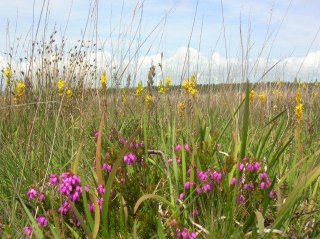 (NVC H6 Erica vagans – Ulex europaeus `mixed heath)
(NVC H6 Erica vagans – Ulex europaeus `mixed heath)
All good-quality areas of dry Atlantic coastal heaths with Erica vagans on the Lizard peninsula in south-west England are included in this site. The full range of structural and floristic variation within NVC type H6 Erica vagans – Ulex europaeus heath is covered, ranging from cliff-top heaths rich in maritime species, such as spring squill Scilla verna, to more inland heaths containing abundant bristle bent Agrostis curtisii
Northern Atlantic wet heaths with Erica tetralix
(NVC H5 Erica vagans-Schoenus nigrans, `Tall heath`)
The Lizard peninsula in the extreme south-west of England has a unique type of wet heath, NVC type H5 Erica vagans – Schoenus nigricans heath. This wet heath occurs extensively on poorly-drained soils derived from ultra-basic serpentine and gabbro. It contains unusual mixtures of species characteristic of acid soils growing with species typical of base-rich soils.
(NVC H4c `Ulex gallii-Agrostis curtsii Erica tetralix sub community `short heath`)
The typical inland, dry heathland on the Lizard is NVC type H4 Ulex gallii – Agrostis curtisii heath, sometimes called ‘short heath’, which differs from other dry heaths in the area which are Annex I type 4040 Dry Atlantic coastal heaths with Erica vagans. These heathlands are dominated by heather Calluna vulgaris and bell heather Erica cinerea. Western gorse Ulex gallii, Cornish heath Erica vagans, cross-leaved heath Erica tetralix purple moor-grass Molinia caerulea and bristle bent Agrostis curtisii can be locally dominant. Good stands of this vegetation type are found on extensive loess deposits.
Vegetated sea cliffs of the Atlantic and Baltic coasts
(NVC H7 Calluna vulgaris – Scilla verna `rock heath`)
 The Lizard, at the extreme south-west tip of England, has been selected for its unusual representation of base-rich igneous and acid metamorphic cliffs. The combination of its complex geology and a southern location has resulted in the diverse nature of the plants and plant communities found here, many of which are particularly species-rich and some of which are rare in the UK. The site includes a typical sequence of cliff vegetation, with a variety of truly maritime plants, which grades into grazed and ungrazed communities on exposed cliffs with dense red fescue Festuca rubra and wild asparagus Asparagus officinalis ssp. prostratus. There are also transitions to heathland, normally dominated by heather Calluna vulgaris and bell heather Erica cinerea, though in addition the Lizard has extensive heath rich in the rare Cornish heath Erica vagans. The Lizard is one of the richest botanical areas in the UK and is of considerable value at EU level, owing to its unusual ecology and outlying representatives of rare species.
The Lizard, at the extreme south-west tip of England, has been selected for its unusual representation of base-rich igneous and acid metamorphic cliffs. The combination of its complex geology and a southern location has resulted in the diverse nature of the plants and plant communities found here, many of which are particularly species-rich and some of which are rare in the UK. The site includes a typical sequence of cliff vegetation, with a variety of truly maritime plants, which grades into grazed and ungrazed communities on exposed cliffs with dense red fescue Festuca rubra and wild asparagus Asparagus officinalis ssp. prostratus. There are also transitions to heathland, normally dominated by heather Calluna vulgaris and bell heather Erica cinerea, though in addition the Lizard has extensive heath rich in the rare Cornish heath Erica vagans. The Lizard is one of the richest botanical areas in the UK and is of considerable value at EU level, owing to its unusual ecology and outlying representatives of rare species.
Hard oligo-mesotrophic waters with benthic vegetation of Chara spp.
The coastal peninsula of the Lizard in south-west England supports a nationally unique series of oligo-mesotrophic waterbodies in which high base-status is not due to limestone or shell-sand. The Lizard is partly underlain by igneous serpentine rock which gives rise to calcium-deficient ground waters that are rich in magnesium. Groundwater drains from adjoining wet and dry serpentine heaths to feed the oligo-mesotrophic waterbodies in which another unusual feature is the occurrence of stoneworts Chara species typical of calcareous lakes, together with species normally associated with acid conditions, such as bog pondweed Potamogeton polygonifolius. Stoneworts present include three Red Data Book species – Chara baltica, C. curta and C. fragifera.
Sites of Special Scientific Interest
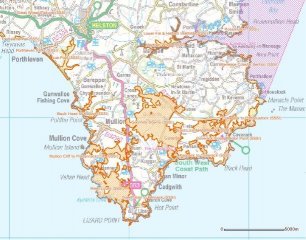 SSSIs are the country’s very best wildlife and geological sites. They include some of the most spectacular and beautiful habitats; wetlands teeming with wading birds, winding chalk rivers, flower-rich meadows, windswept shingle beaches and remote upland peat bogs.
SSSIs are the country’s very best wildlife and geological sites. They include some of the most spectacular and beautiful habitats; wetlands teeming with wading birds, winding chalk rivers, flower-rich meadows, windswept shingle beaches and remote upland peat bogs.
There are over 4,100 Sites of Special Scientific Interest (SSSIs) in England, covering around 8% of the country’s land area. More than 70% of these sites (by area) are internationally important for their wildlife and designated as Special Areas of Conservation (SACs), Special Protection Areas (SPAs) or Ramsar wetland sites.
SSSI’s are legally protected under the Wildlife and Countryside Act 1981, as amended by the Countryside and Rights of Way (CROW) Act 2000 and the Natural Environment and Rural Communities (NERC) Act 2006.
This legislation gives Natural England powers to ensure better protection and management of SSSIs and safeguard their existence into the future. The Government’s Public Service Agreement target is for 95% of SSSI land to be in ‘favourable’ or ‘recovering’ condition by 2010.
The unique and varied habitats of SSSIs have developed over hundreds of years through management practices such as grazing and forestry, and need active management to maintain their conservation interest. We work with over 26,000 separate owners and land managers, who work very hard to conserve these important sites. Maintaining goodwill and building upon the enthusiasm, knowledge and interest of owners is vital to successfully manage these sites.
There are eight SSSIs on The Lizard – Goonhilly Downs, East Lizard Heathlands, Kennack to Coverack, Coverack to Porthoustock, Caerthillian to Kennack, West Lizard, Mullion Cliff to Predannack and Baulk Head to Mullion.
For more info on SSSIs see here.
National Nature Reserve
![]() Many of the finest sites in England for wildlife and geology are National Nature Reserves. Almost all are accessible and provide great opportunities for people to experience nature.
Many of the finest sites in England for wildlife and geology are National Nature Reserves. Almost all are accessible and provide great opportunities for people to experience nature.
There are currently 224 NNRs in England with a total area of over 94,400 hectares, which is approximately 0.6% of the country’s land surface. The largest is The Wash NNR covering almost 8,800 hectares, whilst Horn Park Quarry in Dorset is the smallest at 0.32 hectares.
From The Lizard in Cornwall to Lindisfarne in Northumberland, England’s National Nature Reserves (NNRs) represent many of the finest wildlife and geological sites in the country. Our first NNRs emerged in the postwar years alongside the early National Parks, and have continued to grow since then.
NNRs were initially established to protect sensitive features and to provide ‘outdoor laboratories’ for research. Their purpose has widened since those early days. As well as managing some of our most pristine habitats, our rarest species and our most significant geology, most Reserves now offer great opportunities to the public as well as schools and specialist audiences to experience England’s natural heritage.
The Reserves are a selection of the very best parts of England’s Sites of Special Scientific Interest and it is this underlying designation which gives NNRs their strong legal protection. The majority also have European nature conservation designations.
The Lizard NNR is managed by Natural England and covers nearly 2000ha. It covers areas of West, central and east Lizard including Caerthillian, Kynance Farm, Goonhilly Downs and Main Dale
www.naturalengland.org.uk/ourwork/conservation/designations/nnr
Red Data Book

The Red Data Books list species which are rare and scarce. This is not necessarily a measure of threat to a species – indeed; more common species may be more under threat than rare but secure ones. The Habitat and Species Action Plans list the actions required to mitigate the threat to species deemed to be at risk.
Rare Species
|
Nationally Rare Species |
Lizard |
Mainland Britain (exc Ire) |
|
Land Quillwort Isoetes histirx |
About 20 localities, short turf pans on west coast and scattered elsewhere |
Lizard only |
|
Western fumitory Fumaria occidentalis |
Scattered localities, cultivated or disturbed ground |
West Cornwall only |
|
Four Leaved Allseed Polycarpon tetraphyllum |
One locality, first found 1872 |
7 long standing colonies in Cornwall, Devon and Dorset, abundant on Scillies |
|
Strapwort Corrigiola litoralis |
One locality, last seen about 1910 |
Now confined to one locality |
|
Fringed Rupturewort Herniaria ciliolata |
Locally abundant on west coast |
Lizard only |
|
Hairy Greenweed Genista pilosa |
Scattered along 8km of west coast, rare elsewhere
|
Lizard, Pembroke and Merioneth only |
|
Long-headed Clover Trifolium incarnatumssp.molinerii |
About 9 coastal localities |
Lizard only? |
|
Twin-headed Clover Trifolium bocconei |
Scattered around coast of Lizard district, extending up coastal valleys |
Lizard only |
|
Upright Clover Trifolium strictum |
About 12 localities, largely on west coast |
Lizard, one site in Radnorshire, extinct on Anglesey |
|
Slender Birds-foot Trefoil Lotus angustissimus |
Two localities, last recorded late 1960s |
Cornwall, Devon, Hampshire and Kent only |
|
Sea Knotgrass Polygonum maritimum |
One (largest UK colony) refound in 1990 |
4 localities, 3 in Cornwall, 1 in south Hampshire |
|
Shore Dock Rumex rupestris |
One, first found 1875 |
About 12 localities on mainland, also Scilly and Dorset |
|
Dorset Heath Erica ciliaris |
One existing, one extinct? |
Cornwall and Dorset only |
|
Cornish Heath Erica vagans |
Dominant over serpentine and gabbro heaths |
Lizard and one very small area on Connor Downs Cornwall |
|
Balm Leaved Figwort Scrohpularia scorodonia |
One locality |
Locally abundant Cornwall, Devon and I o S |
|
Pennyroyal Mentha pulegium |
4 localities post 1990 in pasture, trackway systems and an old quarry |
Cornwall, Devon, Hampshire and Berkshire – very rare outside New Forest |
|
Spotted Cats Ear Hypochoeris maculata |
1 locality in rock heath on serpentine |
About 10 localities, Cornwall, Caernarvonshire, Lancashire and eastern England |
|
Wild Asparagus Asparagus officinalis ssp prostratus |
About 15 coastal sites |
Very rare away from Lizard, about 3 other Cornish colonies, plus Pembroke and Glamorgan |
|
Dwarf Rush Juncus capitatus |
About 30 colonies, largely on serpentine on west coast, plus exposed rock outcrops inland |
Largely confined to Lizard; apparently extinct in 3 additional Cornish colonies; still present sporadically at Anglesey |
|
Pigmy Rush Juncus pygmaeus |
17 post 1950 localities, largely confined to heathland cart-ruts; severe decline since |
Lizard only |
|
Babington`s Leek Allium ampeloprasum var. babingtonii |
Widespread in disturbed places throughout peninsula; increasing |
I o S, Cornwall, Devon, Somerset, Dorset; increasing |
|
Early Meadow Grass Poa infirma |
About 10 coastal sites, on coast paths and village green |
I o S, Cornwall, Devon |
Nationally Scarce Lizard Species
|
(Maidenhair Fern) |
Adiantum capillus-veneris |
|
**Chives |
Allium schoenoprasum |
|
*Scarce Lords and Ladies |
Arum italicum ssp. Neglectum |
|
**Lanceolate Spleenwort |
Asplenium bilotii |
|
Lesser Quaking Grass |
Briza minor |
|
*Hill Sedge |
Carex Montana |
|
*Dotted Sedge |
Carex punctata |
|
(Cornflower) |
Centaurea cyanus |
|
(Tufted Centaury) |
Centaurium capitatum |
|
**Yellow Centaury |
Cicendia filiformis |
|
Galingale |
Cyperus longus |
|
*Bog Hair Grass |
Deschampsia setacea |
|
*Six Stamened Waterwort |
Elatine hexandra |
|
*Needle Spike Rush |
Eleocharis acicularis |
|
Lanceolate Willowherb |
Epilobium lanceolatum |
|
Sea Storksbill |
Erodium maritimum |
|
**Musk Storksbill |
Erodiummoschatum |
|
Sea Spurge |
Euphorbia paralias |
|
|
Fumaria bastardii |
|
Ramping Fumitory |
Fumaria capreolata |
|
Purple Ramping Fumitory |
Fumaria purpurea |
|
*Henbane |
Hyoscamus niger |
|
**Wavy Leaved St Johns Wort |
Hypericum undulatum |
|
(Coral Necklace) |
Illecebrum verticullatum |
|
Golden Samphire |
Inula crithmoides |
|
Sea Pea |
Lathyrus japonicas ssp. Maritimus |
|
Tree Mallow |
Lavatera arborea |
|
Rock Sea Lavender |
Limomium binervosum |
|
**Hairy Birds-foot-trefoil |
Lotus subbiflorus |
|
(Marsh Clubmoss) |
Lycopodium inundatum |
|
(White Horehound) |
Marrubium vulgare |
|
Toothed Medick |
Medicago polymorpha |
|
**Bastard Balm |
Melitis melissophyllum |
|
**Spring Sandwort |
Minuarta verna |
|
**Upright Chickweed |
Moencha erecta |
|
*Corky Fruited Water Dropwort |
Oenanthe pimpinelloides |
|
*Green Winged Orchid |
Orchis morio |
|
**Thyme Broomrape |
Orobanche alba |
|
*Ivy Broomrape |
Orobanche hederae |
|
(Carrot Broomrape) |
Orabanche maritime |
|
*Greater Broomrape |
Orobanche rapum-genistae |
|
(Long Prickly-headed Poppy) |
Papaver argemone |
|
(Round Prickly-headed Poppy |
Papaver hybridum |
|
Yellow bartsia |
Parentucelia viscose |
|
**Pillwort |
Pilulariaglobulifera |
|
(Lesser Water Pepper) |
Polygonum minus |
|
Ray`s Knotgrass |
Polygonum oxyspermumssp raii |
|
Saltmarsh Water-crowfoot |
Ranunculus baudotii |
|
Small Buttercup |
Ranunculus parviflorus |
|
**Three-lobed Water-crowfoot |
Ranunculus tripartitus |
|
(Tasselweed) |
Ruppia cirrhosa |
|
(Shepherds Needle) |
Scandix pectin-veneris |
|
**Autumn Squill |
Scilla autumnalis |
|
Cornish Moneywort |
Sibthorpia europaea |
|
*Clustered Clover |
Trifolium glomeratum |
|
**Western Clover |
Trifolium occidentale |
|
**Birds –foot Fenugreek |
Trifolium ornithopodioides |
|
*Suffocated Clover |
Trifolium suffocatum |
|
(Toothed Cornsalad) |
Valerianella dentate |
|
*Twiggy Mullein |
Verbascum virgatum |
|
*Bithynian Vetch |
Vicia bithynica |
|
**Yellow Vetch |
Vicia lutea |
|
**Pale Heath Violet |
Viola lacteal |
|
Eelgrass |
Zostera angustifolia |
|
Eelgrass |
Zostera marina |
|
Eelgrass |
Zostera noltii |
|
|
|
** Nationally important populations
*Species rare in Cornwall
() Extinct, unconfirmed or species not native at the Lizard
Biodiversity Action Plans
Biodiversity Action Plans identify the habitats and species most in need of conservation action, identifies what that action should be and identifies the organisations who will implement it. The complete list of Action Plans for Cornwall can be found in the publications section, but here are some of the notable species on the list which have been identified as needing attention on The Lizard.
Species Action Plans
- The lichens Caloplaca aractina, Cladonia mediterranea(Reindeer lichen), Heterodermia leucomela (Ciliate Strap-Lichen), Teloschistes flavicans ( Golden Hair Lichen)
- The bryophytes Toothed Threadwort, Atlantic Lejeunea and the moss Weissia multicapsularis
- The vascular plants Wild Asparagus, Chamomile, Yellow Centaury, Glandular Eyebright, Field Gentian, Pygmy Rush, Bastard Balm, Pennyroyal, Pillwort, Lesser Butterfly Orchid, Three-lobed Water-crowfoot and Pale Dog Violet
- The butterflies Small Pearl Bordered Fritillary, Small Heath, Marsh Fritillary, Grayling, Wall, and Silver-studded Blue
- Slow worm, common toad, adder and common lizard
- Sky Lark, Linnet, Hen Harrier, Cuckoo, Grasshopper Warbler,
Habitat Action Plans
- Heathland
- Maritime Cliffs and slopes


